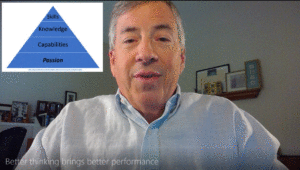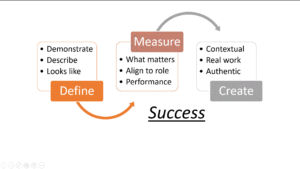Behavioral skills are tomorrow’s success!
There is a lot of talk about the challenges in hiring and recruiting skilled employees. To make it more concerning industry analysts are warning employers that college graduates that meet technical job-specific skills to day will need to upskill and be trained for the same role in about 6 years.
day will need to upskill and be trained for the same role in about 6 years.
Perhaps it’s time to examine the real needs of the organization today and in the next 24 to 36 months. New research on successful candidates reveal the need employers have is centered more on behavioral skills so while technical skills might get you the job it is the competencies, behavioral skills, around communication, adaptability, prioritization and time management, working on and with teams – these Higher Order Thinking Skills are needed for employees to be successful operating across functional, organizational, and time-defined boundaries.
Check out this video and let’s discuss how we can partner with you to define the real-world behavioral skills these roles need and create the path forward to bring people with purpose into a productive environment.
If you would like to learn how to implement and use workflow learning and develop thinking workers using learning as a strategic business tool send me an email or call me and let’s talk! Use the contact button above or visit our web site!


 kNOW is how we can move forward. Now I come from the classical school of ADDIE where instructional design has Curriculum driving the process. Work with a SME to identify content, develop the lessons and modules, select media and then add in assessments.
kNOW is how we can move forward. Now I come from the classical school of ADDIE where instructional design has Curriculum driving the process. Work with a SME to identify content, develop the lessons and modules, select media and then add in assessments.

